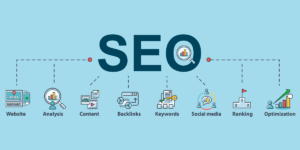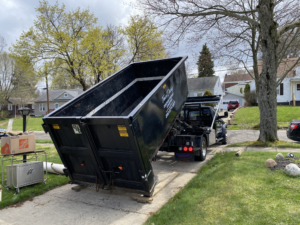A plumber is a skilled professional who installs, repairs and maintains pipes and fixtures that are used for water distribution and waste water disposal in residential, commercial and industrial buildings. He or she also identifies problems with these systems and works to resolve them.
Plumber Cleveland Ohio often collaborate with other professionals, such as architects and construction teams, to ensure plumbing systems are integrated seamlessly into building projects. They must be able to explain complicated issues in simple terms and provide customers with accurate estimates for their work.

Education and Training
In order to start a career as a plumber, it is important to have the proper qualifications. This can be done through formal education or through apprenticeships. Many colleges and technical schools offer programs that can lead to a job as a plumber. These programs usually include classroom instruction and hands-on training. They will cover topics like local plumbing codes and regulations, blueprint reading, and safety practices.
Apprenticeship programs are typically sponsored by trade unions or employers and last four to five years. They combine classroom instruction with paid on-the-job training. After completing an apprenticeship, you will need to pass a state certification exam to become a licensed plumber. Some states also require that you have a high school diploma or equivalent before you can begin working as a plumber.
Most apprentices are trained by experienced journeymen plumbers. Journeymen must have at least 2,000 hours of on-the-job experience and must pass a state certification exam to become licensed. Apprentices can also attend a vocational school or community college that offers plumbing programs. These programs will prepare you to install, repair and maintain pipes, fixtures and equipment used for water distribution, hot-water production and waste-water removal in residential and commercial settings.
Plumbers often work with clients, so it is important that they have strong customer service skills. This includes being able to listen carefully to a client’s problem and provide them with clear and concise information. They also need to be able to troubleshoot problems quickly and accurately.
The responsibilities of plumbers vary from state to state, but they typically involve installing, repairing and maintaining pipes and fixtures for water distribution, heating, cooling, and waste-water removal. They may also be responsible for designing, building and testing systems that provide potable water and sanitary sewer services. In some cases, plumbers may be required to work on medical gas systems for hospitals, clinics and other facilities that use oxygen or other flammable gases.
Plumbers must be able to read and understand blueprints and other technical drawings in order to install or repair plumbing systems. They must also be able to follow directions and make accurate measurements. Additionally, plumbers must be able to safely handle hazardous materials, such as mercury and lead.
Work Environment
As plumbers work with pipes that carry water, waste and gas to and from homes and businesses, they are required to be comfortable working in a variety of different environments. They also need to have a good level of physical strength and agility in order to handle tools, machinery and pipe systems.
Plumbers often collaborate with other professionals on building projects. They may assist architects and engineers at the initial planning stages to ensure that plumbing systems are integrated seamlessly into new constructions. They may also work on building sites to carry out repairs and installations for existing structures.
In addition, plumbers work with customers to understand their needs and provide advice on plumbing solutions. They are also responsible for preparing cost estimates and ensuring that clients are satisfied with their work. Moreover, plumbers are required to follow all relevant health and safety regulations when working on projects.
The types of environments in which plumbers typically work include residential, commercial and industrial buildings. They are also likely to be required to work on projects in public buildings, such as schools and hospitals. Plumbers may also be employed by government agencies to maintain public infrastructure, such as water supply networks and sewer systems.
In the course of their job, plumbers are required to inspect and assess pipe work for wear and tear, test pressure levels and locate leaks. They are also required to install and repair toilets, faucets, water heaters and drain lines. Depending on the specific type of project, plumbers may also be involved in installing electrical wiring and gas lines.
Plumbers who are licensed can often supervise other plumbers and apprentices. They are also required to be knowledgeable about all aspects of plumbing work and have the ability to draft blueprints and design plumbing systems. They are also required to obtain the necessary permits and inspections for their work.
A career as a plumber can be rewarding and challenging. It can lead to many different opportunities, but it is important to consider your work environment and personal preferences before making a decision. Fortunately, there are many vocational training programs available that can help you find the perfect path for your career.
Job Duties and Responsibilities
Plumbers install and repair pipes, fixtures and other plumbing equipment used for water distribution and waste disposal in homes, businesses, and industrial structures. They may also work on gas, steam and air lines. They use a variety of tools and techniques to perform their job duties, such as soldering, brazing, cutting, threading, bending, welding and more. Plumbers are typically employed by plumbing contractors or by construction companies, but can also be self-employed.
In addition to repairing and installing plumbing fixtures, such as toilets and sinks, plumbers must be able to diagnose problems with pipes and water systems. They may need to use specialized equipment like video cameras and pressure gauges to inspect sewer and drain lines, and must be familiar with building codes and regulations to ensure their work is safe and up to code. Plumbers must also be able to read blueprints and drawings to assess and plan the layout of new plumbing installations.
Service plumbers are often called out to deal with emergency situations, such as clogged toilets and drains, and must be able to handle these emergencies efficiently and effectively. They must be able to work quickly and accurately, and should be comfortable handling customer complaints. Additionally, service plumbers must be able to communicate clearly with their customers and explain complex issues in simple terms.
In new construction projects, plumbers are responsible for the installation of pipes, drainage systems, and appliances such as sinks and toilets. They must be able to read and interpret blueprints and building specifications to determine the layout of plumbing systems and install them according to those plans. They may also be responsible for ensuring that all new plumbing meets local and state codes.
When hiring service or maintenance plumbers, it is important to include a detailed description of the job responsibilities and qualifications in the job posting. This will help to attract qualified candidates and ensure that the company hires the best fit for the position. A call to action at the end of the job posting can also help increase the response rate by instructing applicants on how to apply for the position.
Salary
The average salary for plumbers can vary widely depending on a number of factors. Some of these include formal education, training programs, and apprenticeships, as well as experience and expertise. Those with advanced certifications may also command higher salaries, as they can demonstrate a high level of professionalism and skill. Additionally, regional demands for plumbing services can influence salaries. For example, areas with strong construction and industrial sectors often require more plumbing professionals.
Entry-level jobs can provide an excellent opportunity for newcomers to the profession to gain valuable work experience while earning as they learn. However, those seeking a career as a plumber should aim to complete a formal education program or apprenticeship in order to qualify for higher-paying jobs.
Some plumbers choose to become self-employed, which can increase their income and give them more flexibility with their work schedule. Others may decide to join a plumbing company or contractor, which can offer competitive benefits packages and opportunities for advancement.
A plumbing company can also offer a wide range of tools and equipment to help new plumbers get started in the field. These can include wrenches, pipe cutters, soldering equipment, and other essential hardware. Some plumbers may also need to use special diagnostic tools to identify problems with a client’s plumbing system.
Plumbers must adhere to strict safety protocols and regulations when working on projects. This is particularly important when working with hazardous materials or in confined spaces. In addition, they may need to wear personal protective equipment to avoid exposure to harmful toxins and chemicals.
In the field, plumbers can expect to perform a variety of tasks. They may install new pipes and fixtures for residential or commercial clients, repair existing systems, and handle a range of other tasks. Some plumbers may specialize in specific areas, such as medical gas systems or sustainable plumbing solutions.
Some plumbers also have the option to work on construction sites, where they can work with other tradespeople and assist in installing plumbing systems according to blueprints and specifications. These positions can be highly rewarding, but they come with added physical demands and a greater risk of injury.


